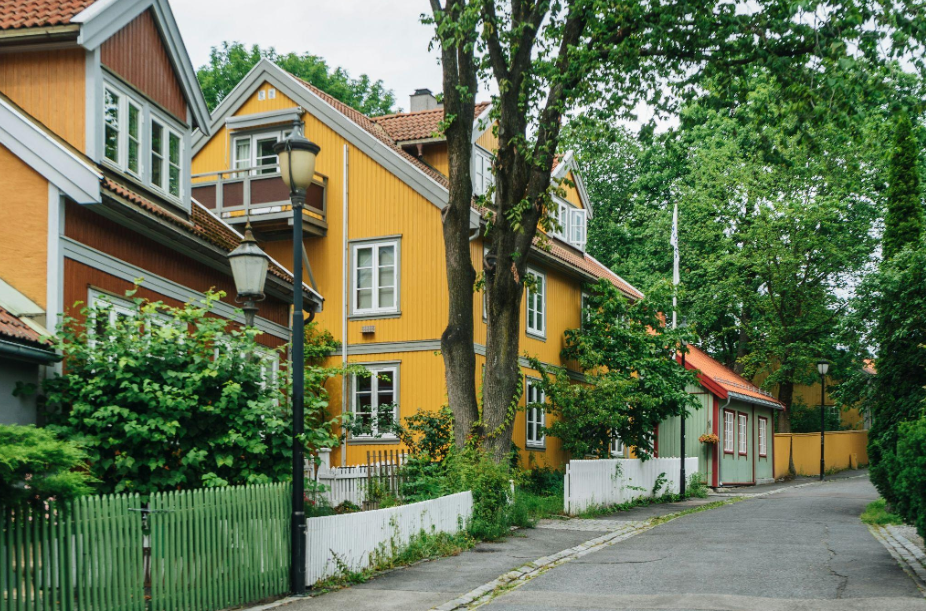In today’s fast-paced urban environments, convenience is king. Homebuyers are no longer just focused on square footage, school zones, or interior finishes—they’re paying close attention to how accessible and connected a neighbourhood is. Two of the most influential, yet often underappreciated, factors that impact property value are walkability and access to public transport. These elements directly shape how residents experience their day-to-day lives. The ability to walk to shops, parks, schools, or transit stations without needing a car adds real, tangible value.
It’s not just about cutting down commute times—it’s about improving lifestyle, reducing costs, and fostering a stronger connection to the local community. Research continues to show that homes in walkable and transit-connected areas consistently command higher prices, faster sales, and stronger long-term growth. In short, ease of movement is becoming one of real estate’s most valuable currencies.
The Shift Toward Convenience and Connectivity
Walkability refers to how friendly a neighbourhood is to walking. This includes proximity to shops, parks, restaurants, schools, and essential services. Transit access, on the other hand, considers the availability, frequency, and reliability of public transport like buses, subways, or trains.
As more people prioritise shorter commutes and car-free living, homes in walkable and well-connected areas are in high demand. According to a study by Redfin, homes in highly walkable neighbourhoods can fetch anywhere from 20 to 30 percent more than those in car-dependent areas. For investors, this premium makes such properties attractive not only for resale value but also for rental income potential.
Walkability: The Lifestyle Premium
“When a neighbourhood scores high on walkability, it usually offers a better quality of life,” explains Justin Azarias, founder and CEO of Property Homebuyers CA. Residents can run errands, grab a coffee, or take the kids to school without relying on a car. This level of convenience appeals to a wide range of buyers—young professionals, downsizers, and even families—who want to reduce time spent in traffic and enjoy a more active lifestyle.
Walk Score, a popular metric used to rate how walkable a location is, has become a go-to tool for homebuyers. Properties with Walk Scores of 90 or above—known as “Walker’s Paradise”—tend to command higher prices and sell faster. Why? Because walkability doesn’t just improve day-to-day life; it also signals that the area is vibrant, safe, and economically thriving.
Moreover, walkable communities often attract better retail and food outlets, improving the social fabric and appeal of the neighbourhood. In turn, this leads to a virtuous cycle: demand increases, property values rise, and local amenities continue to improve.
The Transit Effect: Accessibility Equals Opportunity
Transit-oriented development has become a buzzword in urban planning circles and for good reason. “Properties located near transit hubs like train stations, metro lines, or rapid bus routes tend to appreciate faster than those in more isolated locations,” explains Robert Grunnah, Owner of Austin House Buyer. Reliable public transportation connects people to jobs, education, and leisure without the burden of car ownership, which is both costly and environmentally taxing.
According to the American Public Transportation Association, homes located near public transportation perform 42% better in terms of property value over time than those without. This trend holds across both high-density urban centres and emerging suburban nodes, especially as more cities invest in expanding their transit networks.
Proximity to transit isn’t just a selling point—it’s a necessity for many. For younger generations that are delaying or forgoing car ownership altogether, access to transit is not negotiable. Likewise, for seniors and people with disabilities, it’s a vital link to independence.
Dual Impact: Where Walkability Meets Transit
“The sweet spot for property value lies in areas that score high on both walkability and transit access. These are the urban villages and mixed-use districts where people can live, work, shop, and socialise without traveling far,” explains Arvind Rongala, CEO of Edstellar. Think inner-city suburbs with well-planned streets, dedicated bike lanes, and seamless transport options. These zones attract a steady stream of buyers and renters who are willing to pay a premium for convenience.
A report from the Brookings Institution highlights that “transit-served, walkable urban places” consistently outperform in job growth, economic resilience, and property value appreciation. This synergy creates stable, long-term investment opportunities for developers and homeowners alike.
Real-World Example: Sydney and Melbourne
Take Australia’s major cities as examples. In Sydney, suburbs like Newtown, Surry Hills, and Redfern command high prices not only because of their character but due to exceptional walkability and access to multiple train lines and bus routes. Similarly, Melbourne’s Fitzroy and South Yarra are prized for their tram networks and pedestrian-friendly layouts.
Conversely, outer suburbs with poor transit connections often struggle with slower appreciation and higher vacancy rates, even if the homes are newer or larger.
Risks and Limitations
While the benefits are clear, there are caveats. Rising property values in highly walkable and transit-rich areas can drive up rent, making it harder for lower-income residents to remain in their communities. Gentrification is a real concern, and city planners must balance demand with equitable housing policies.
There’s also the risk of overestimating the value of proximity. If transit systems are unreliable or poorly maintained, the expected premium may not materialise. Walkability can also decline if local councils don’t invest in pedestrian safety, lighting, or green spaces.
What This Means for Buyers and Investors
“If you’re looking to buy a home or invest in property, it’s wise to consider more than just the home itself,” explains Gil Dodson, Owner of Corridor Recycling. Research local Walk Scores, study transit maps, and explore neighbourhoods on foot. High connectivity tends to translate into strong long-term returns, lower vacancy rates, and better lifestyle satisfaction.
For developers, focusing on projects that emphasise mixed-use, walkable design, and easy transport access is not just a trend—it’s becoming a necessity. Buyers are making smarter, more informed decisions, and properties that meet these expectations are far more likely to stand out in a competitive market.
Final Thoughts
Walkability and transit access are no longer just “nice-to-haves” in real estate—they’ve become essential features that directly influence property values. As cities become denser and lifestyles shift toward convenience and sustainability, demand for well-connected, pedestrian-friendly neighbourhoods is growing rapidly. Buyers are looking for locations that offer easy access to public transport, shops, schools, and services—all within walking distance.
This trend isn’t just about lifestyle; it’s also a smart financial decision. Properties in these areas tend to appreciate faster, sell quicker, and attract more long-term renters. For sellers and investors, recognising the value of connectivity can unlock better returns. Understanding this shift is key to making informed, future-proof property decisions in a market where mobility and liveability are driving demand.






